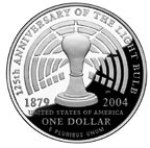
Commentary: A Bright Idea that Burned Out
The Lamp Section of the National Electrical Manufacturers Association (NEMA) on Sept. 21 reaffirmed its commitment to public policies that encourage transitioning to more energy-efficient lighting, including the energy-efficient light bulb provisions of the Energy Independence and Security Act of 2007 (EISA 2007).
The Better Use of Light Bulb Act (BULB Act), which was recently introduced by U.S. Rep. Joe Barton (R-Texas), would repeal EISA 2007 lighting provisions.
According to NEMA Vice President of Government Relations Kyle Pitsor, the lighting industry is investing heavily in new products that meet consumer demands for efficiency and light quality while developing marketing information that will help people understand the variety of products available to them as this transition takes place.
NEMA, like Congressman Barton, understands that consumers may be anxious as the lighting industry undergoes this technology shift to higher energy-efficient products, the group said.
“The reality is that consumer preference already has been shifting away from incandescent products, with the market for standard household incandescent bulbs declining by 50 percent over the last five or so years. With lighting consuming approximately 22 percent of all electricity in the U.S., the potential for energy savings and energy conservation that the country — and the world — can realize with this change to higher technology light sources is immense. American businesses and consumers will annually save billions of dollars in electricity bills once the transition is complete,” Pitsor said.
EISA lighting provisions set phased-in, performance-based, technology-neutral standards, starting in 2011 in California, and nationally between 2012 and 2014. The new standards will continue to provide consumers with a choice of energy-efficient lighting products to meet their needs including high-efficiency halogen (advanced technology incandescent), compact fluorescent (CFLs), and light-emitting diode (LED) solid state products.
The first product to be affected is the 100-watt incandescent bulb. Beginning on Jan. 1, 2012, manufacturers are required to produce bulbs that meet the EISA 2007 minimum efficiency requirements that result in nearly a 30 percent improvement in efficiency while providing about the same amount of light (lumens) as today’s 100-watt bulb. The new bulbs will last longer.
Over the course of two years, similar changes will take place for 75-, 60-, and 40-watt bulbs.
EISA 2007 provisions do not mandate the use of only compact fluorescent lamps (CFLs), nor do they “ban” incandescent products, according to NEMA.
“Energy-saving halogen (advanced incandescent) bulbs join CFLs on store shelves today, and provide the choices and desired lighting ambiance consumers want, using much less energy than consumed by the 100-year old technology they replace. More products are becoming available every day, including energy-saving, long-lasting LEDs to fill the 4.4 billion medium screw-base sockets in the U.S.,” Pitsor said.
NEMA's Lamp Section is composed of 15 manufacturers of all types of lamps (light bulbs).
Barton and U.S. Reps. Michael Burgess, (R-Texas) and Marsha Blackburn, (R-Tenn.) say EISA 2007 is a de facto ban on incandescent light bulbs and introduced the BULB Act to correct that "unanticipated consequence."
“Thousands of American jobs have been shipped overseas as a direct consequence of this light bulb provision in the Democrats’ 2007 energy bill,” Burgess said. “Further, I have stated all along that exposing our citizens to the harmful effects of the mercury contained in CFL light bulbs, which are being manufactured in China, is likely to pose a hazard for years to come. This light bulb issue is just the latest example of Republicans attempting to correct the mistakes of Nancy Pelosi’s misguided Democrat-controlled Congress.”
The lawmakers also pointed out that CFLs, the most common fluorescent bulb alternative, are problematic because will have a shorter lifespan if they are turned off and on frequently, can raise heating bills, affect people with certain health conditions, and can overheat and smoke (according to an Energy Star program warning).